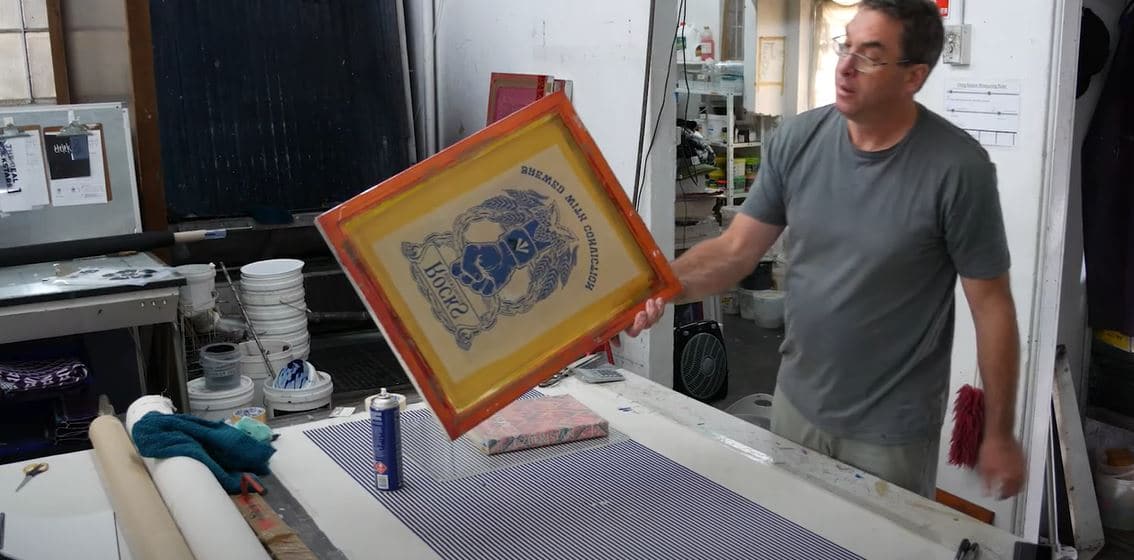ChatGPT said: 10:9 Design reviews: uncovering the pros and cons
The Essential Overview to Recognizing Screen Printing and Its Versatile Makes use of
Screen printing has an abundant background that goes back to ancient times, evolving right into an innovative method used throughout numerous markets today. This overview discovers the intricacies of the screen printing process, describing its applications in home, style, and advertising and marketing décor - 10:9 Design Embroidery. Understanding these principles can open up creative possibility for both industrial and artistic jobs. The following areas will certainly disclose necessary pointers and techniques to improve one's screen printing endeavors
The Background of Screen Printing
Although screen printing has roots that trace back centuries, its evolution mirrors the technological and creative advancements of various cultures. Coming from in ancient China, the strategy was at first utilized for enhancing textiles and later infect Japan, where it ended up being indispensable to Ukiyo-e woodblock printing. The technique changed to Europe in the 18th century, where it got popularity amongst craftsmens and industrial printers. The development of picture solution in the 20th century changed screen printing, enabling more complex layouts and greater performance. Musicians like Andy Warhol better propelled its appeal, using the medium to create renowned works that mixed commercialism and art. By the late 20th century, screen printing had actually established itself as a functional strategy, employed in vogue, advertising and marketing, and art. Today, it continues to develop, integrating digital modern technology and increasing its applications throughout various industries.
The Screen Printing Refine Explained
Screen printing changes artistic visions right into substantial designs via a collection of precise steps. A picture is produced and after that moved onto a screen, typically made of fine mesh textile stretched over a structure. A light-sensitive emulsion is applied to the screen, which is revealed to light, setting in areas not covered by the picture. After cleaning out the unhardened solution, a pattern is developed.
Next off, the screen is put over the substratum, whether it be fabric, paper, or another product. Ink is after that pressed with the open locations of the stencil utilizing a squeegee, depositing the style onto the substratum listed below. This procedure can be repeated for numerous colors, calling for different displays for each shade. The printed item is cured using warmth to ensure the ink sticks effectively, resulting in a long lasting, lively design ready for use.
Types of Screen Printing Techniques

Furthermore, specialized methods, such as discharge screen printing, eliminate dye from the textile to create softer prints, while foil screen printing uses metallic aluminum foil to achieve a glossy coating (10:9 Design Screen Printing). Each technique provides distinct characteristics, catering to numerous imaginative requirements and manufacturing ranges, eventually broadening the opportunities within the screen printing domain
Applications of Screen Printing in Different Industries

Additionally, the signs and advertising and marketing sectors make use of screen printing for producing attractive screens and banners. This method permits for bold shades and complex designs that record focus. In electronics, screen printing is used for applying conductive inks to circuit boards, necessary for part links. The home décor industry welcomes screen printing to create distinctive layouts on fabrics and wall surface art. Generally, screen printing functions as a crucial tool across diverse fields, enhancing products with personalized and visually enticing graphics.
Tips for Successful Screen Printing Projects
While embarking on a screen printing task, careful interest to information can substantially enhance the last outcome. Initially, picking premium products is essential; this includes the screen, inks, and substratums. Using suitable mesh matters can affect ink deposition and information resolution. Preparation is equally crucial; detailed cleaning of screens and correct direct exposure times ensure crisp prints.
Next, click here exact registration is important for multi-color prints. Utilizing placement tools can aid accomplish specific layering. Furthermore, testing prints on scrap products prior to production assists determine prospective concerns without wasting resources.

Regularly Asked Inquiries
What Products Are Best for Screen Printing on Material?
Cotton and polyester blends are ideal for screen printing on textile as a result of their toughness and ink absorption. Furthermore, specialty materials like silk or canvas can create one-of-a-kind appearances and coatings, enhancing the overall style top quality.
Exactly how Do I Clean and Maintain Screen Printing Devices?
To keep and clean up screen printing devices, one should routinely clean displays with ideal solvents, inspect squeegees for wear, lube moving components, and shop all things in a dry, dust-free environment to prolong their life-span.
What Are the Environmental Effects of Screen Printing?
Screen printing can have substantial ecological impacts, consisting of chemical waste from solvents and inks, water usage during cleansing processes, and power usage. Sustainable methods and environmentally friendly products are important for lessening these unfavorable impacts.
Can Screen Printing Be Done at Home Properly?
Screen printing can be properly done at home with the best materials and techniques. Enthusiasts can produce top quality prints, though success depends on their skill degree, equipment, and understanding of the process involved.
What Are the Costs Connected With Starting a Display Printing Business?

Beginning a screen printing business includes costs for equipment, products, and workspace. First expenditures usually range from a few hundred to several thousand bucks, depending upon the scale, high quality of equipment, and desired manufacturing capability.
Screen printing has a rich history that dates back to old times, advancing right into a sophisticated method used throughout numerous sectors today. One more strategy, rotating screen printing, employs round screens, helping with continuous printing on material rolls, thus boosting efficiency for large-scale manufacturings. In addition, specialized strategies, such as discharge screen printing, get rid of dye from the material to create softer prints, while aluminum foil screen printing uses metallic aluminum foil to accomplish a shiny surface. In the style industry, screen printing is widely made use of to develop vivid styles on apparel, enabling brands to showcase their special designs. Cotton and polyester blends are perfect for screen printing on fabric due to their sturdiness and ink absorption.